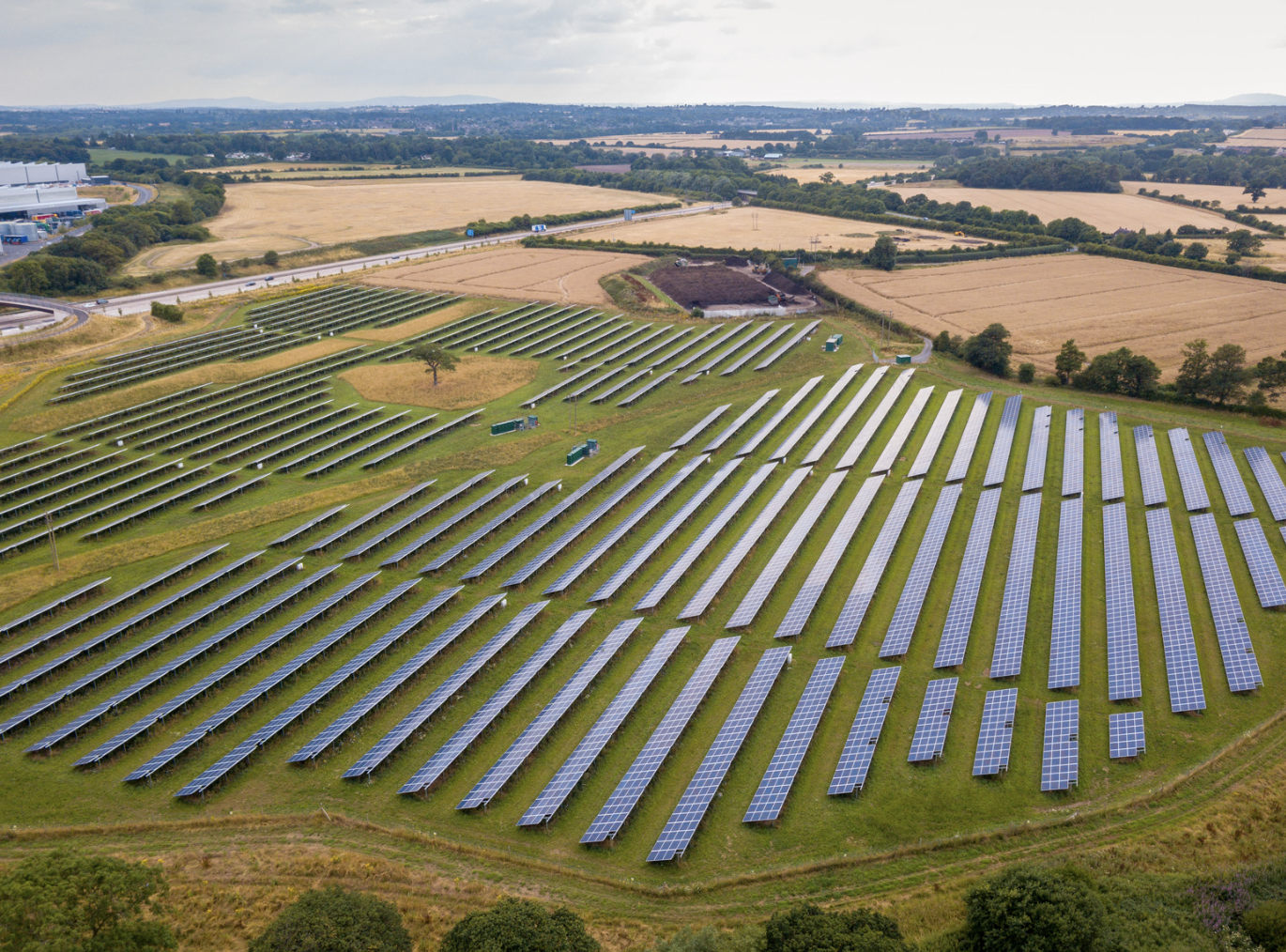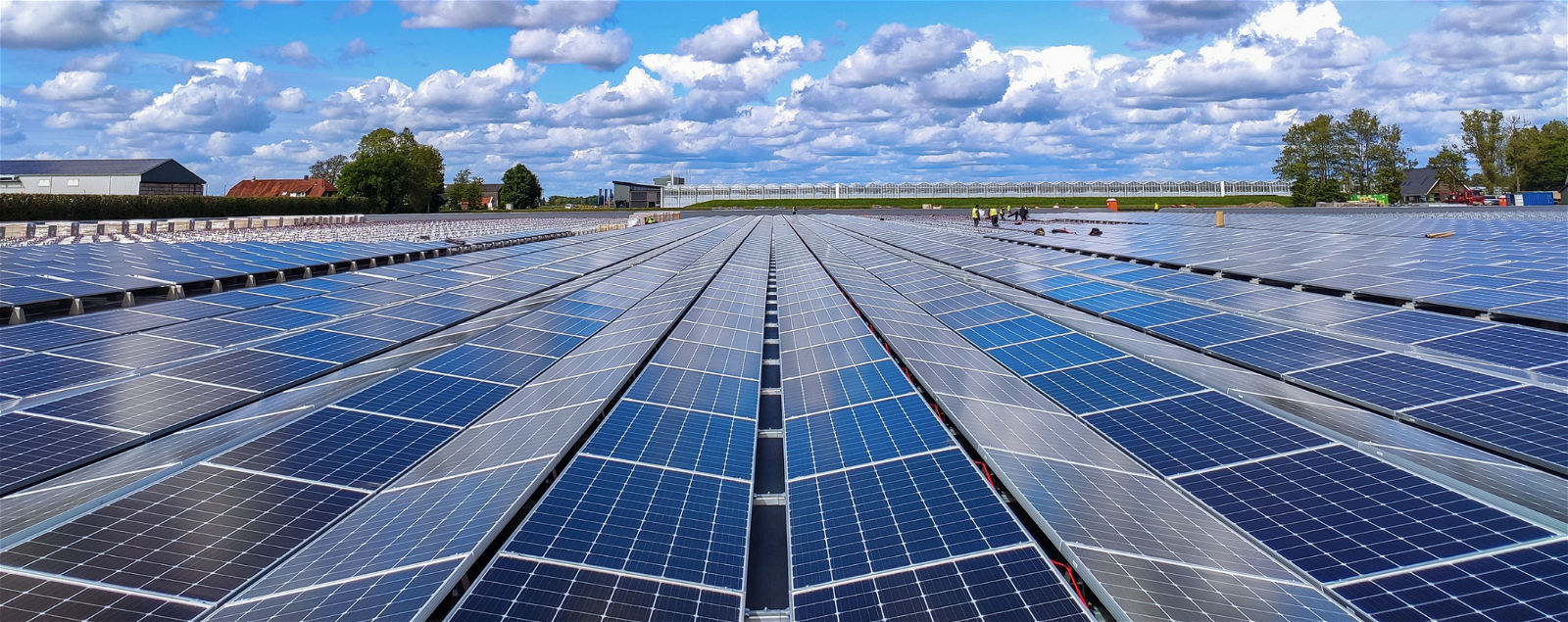Facts about solar energy - turning light into power for a bright future


· 11 min read
This article is part of our series to spread free & quality sustainability knowledge for all. Compare on Data Hub™ the sustainability performance of the largest solar energy firms: First Solar, SunPower, Canadian Solar, JinkoSolar, and Enphase Energy.
In today’s challenging environment, solar energy shines brightly as a symbol of hope for renewable, clean energy. Fossil fuels are finite, and we are fast running out. At the rate we are going, some estimate that we will run out around 2060!
However, the sun emits tens of thousands of times the energy we are using, and if we harness solar power effectively, we will have unlimited energy.
From ancient civilizations that first harnessed the sun’s solar power to modern day cutting-edge technologies that drive us to a greener tomorrow, this article will highlight some interesting solar energy facts and how it can stall climate change, drive economic growth, and pave the way for a more sustainable future.
The idea of harnessing the sun’s energy isn’t new. After all, it IS the world’s most abundant energy source! Ancient civilizations like the Greeks and Romans started harnessing solar power for architectural uses, building south-facing windows to capture this abundant energy resource, especially during the colder months.
The concept of architectural heating was also used in ancient China and Native American cultures, and the Egyptians built temples and monuments that were aligned with direct sunlight. All these practices highlighted our long-standing recognition of solar power and its importance in both practical and ceremonial aspects of life.
By the 7th century B.C., there are records of concentrated solar power being used to light fires through magnifying glass materials. Archimedes, the Greek scientist, is famously rumored to have used bronze shields to reflect the sun’s rays and set invading Roman ships on fire during the Siege of Syracuse in 212 B.C., although this story is more myth than historical fact.
These early uses of solar power paved the way for the modern technologies that are crucial to today's efforts to harness renewable energy sources.

Solar technology and panels have come a long way since their inception. At the heart of the tech is the photovoltaic (PV) cell, a device that converts sunlight straight into electricity. In 1839, Edmond Becquerel discovered that some materials can generate electricity when exposed to light.
He invented the first electrochemical cell with plates of platinum and gold immersed in a solution and exposed to radiation. It wasn’t very efficient, so in 1873, Willoughby Smith discovered selenium was a more effective material, and in 1881, Charles Fritts created the first solid solar cell, and the very first panel was installed on a New York City rooftop.
It wasn’t until 1939 when Russell S. Ohl, an American engineer created the first silicon solar cell, a design still used in today’s modern panels. Today, solar panels include perovskite solar cells, which offer the potential for even higher efficiencies in electricity generation and lower costs, and building-integrated photovoltaics (BIPV), which seamlessly integrate solar cells into building materials.
The evolution of solar panel technology reflects a remarkable journey from niche scientific curiosity to a cornerstone of global renewable energy infrastructure. As technology continues to advance, the average solar panel system is becoming more efficient, affordable, and versatile, promising a future where solar power plays a central role in providing us with a renewable energy source.
Leading the charge for the largest solar farms are two giant countries, China and India. India’s Bhadla Solar Park is currently the world’s largest, with a solar capacity of 2,245 megawatts, which is enough to power 1.3 million homes. The third-largest park, Pavagada Solar Park, is also found in India.
However, China lays claim to being the world leader and largest producer of solar energy. Huanghe Hydropower in Hainan is the world’s second-largest solar plant with a solar capacity of 2,200 megawatts, and Tengger Desert Solar Park produces 1,547 megawatts.
the world leader and largest producer of solar energy. Huanghe Hydropower in Hainan is the world’s second-largest solar plant with a solar capacity of 2,200 megawatts, and Tengger Desert Solar Park produces 1,547 megawatts.
In recent years, solar has been fast gaining traction as clean energy. The efficiency of solar panels has always improved dramatically and innovations in PV technology have enabled solar panels to convert sunlight into electricity at a lower cost. For example, the development of perovskite solar cells and improvements in silicon wafer technology have led to higher energy yield and longer lifespans for solar panels, which can now last about 30 years.
Solar PV generation increased by a record 270 TWh (up 26%) in 2022, reaching almost 1 300 TWh and surpassing wind energy for the first time. As the global demand for solar panels has increased, manufacturers have been able to scale up production, leading to significant reductions in the cost of solar power generation.
This scale of production has not only lowered the cost of solar panels but also the associated hardware and installation costs. Large-scale solar projects benefit from economies of scale, further reducing the cost per megawatt-hour (MWh) of solar-generated electricity.
According to Lazard’s Cost of Energy Analysis, solar costs are as low as 4.3 cents per kWh, while natural gas, the cheapest fossil fuel, costs between 4.2 and 7.8 cents per kWh, which means solar energy users save on costs in the long run.
There is a growing recognition of the environmental costs associated with fossil fuels, including air pollution, health impacts, and greenhouse gas emissions that contribute to climate change. In fact, the economic costs of air pollution from fossil fuels were estimated at US $2.9 trillion in 2018, and an estimated 4.5 million people died that year due to exposure to air pollution.
In contrast, solar is the most abundant energy resource and offers clean, renewable power with minimal environmental impact, unlike fossil fuels. The societal push towards sustainability is also driving the adoption of solar technologies and other renewables, further influencing market dynamics.
The process of manufacturing solar panels involves extracting raw materials and converting them into photovoltaic (PV) cells and modules. While this stage does involve emitting greenhouse gases due to the energy used in the production process and the transportation of materials, the carbon emissions are significantly lower than those associated with extracting and processing fossil fuels.
Advances in manufacturing efficiency, the use of cleaner sources in production facilities, and the recycling of solar panel components further reduce the carbon footprint of this stage.
At the end of their life cycle, most solar panels can be decommissioned and recycled. The recycling process does generate emissions, but ongoing advancements in recycling technologies aim to recover more materials and reduce the environmental impact. Proper recycling helps mitigate the GHG emissions associated with the disposal of solar panels, further enhancing the sustainability of renewable energy.
The Solar Energy Industries Association (SEIA) is a pivotal organization in the United States dedicated to promoting the adoption and expansion of solar energy. As the national trade association for the solar energy industry, SEIA plays a critical role in driving the movement towards a clean energy future, representing the interests of solar energy companies across the country.
Its efforts are instrumental in shaping policy, promoting market development, and providing comprehensive research and education on solar energy and its benefits. By pushing for supportive policies, fostering market development, educating the public, and ensuring industry integrity, SEIA is at the forefront of powering the US with clean, renewable energy.
The challenges of solar energy storage primarily revolve around cost, efficiency, capacity, and technology. High costs of storage solutions, such as batteries, can deter widespread adoption, making solar systems less economically viable for consumers and businesses.
Additionally, current technologies struggle with capacity issues, unable to store enough energy to fully meet demand during periods without sunlight. Finally, technological advancements in energy storage are needed to overcome these barriers, requiring significant investment in research and development to create more efficient, sustainable, and cost-effective storage options for solar energy.
Solar energy is an abundant power source that can be cheaper than fossil fuels and creates minimal greenhouse gas emissions. The manufacturing and installation of solar panels does emit some gasses, but panels can last beyond 30 years and it is a one-time cost. The world’s largest producer of solar energy is China, but the largest and third-largest solar parks are located in India.
The amount of solar power needed to run a house varies widely depending on the household's size, location, energy efficiency, and daily energy consumption. On average, a typical U.S. home consumes about 877 kilowatt-hours (kWh) per month or about 29 kWh per day. To meet this demand, a home would typically need a solar panel system between 6 to 8 kilowatts (kW). However, this estimate can fluctuate. For instance, homes in sunnier areas may require less capacity, while those in regions with less sunlight or higher usage might need more.
Solar power, hailed for its contribution to sustainable energy, presents a blend of advantages and disadvantages. On the plus side, it offers a renewable, abundant source of energy that can significantly reduce greenhouse gas emissions and electricity bills, with relatively low maintenance costs once installed.
However, it also faces challenges, including high solar panel installation costs, dependence on weather conditions, and the need for substantial space for larger systems. For example, solar energy farms often cover between 1 to 100 acres of land, and about 25 acres is needed for every 5 megawatts of installation: enough to power over 1,500 homes.
Solar is an immensely powerful source of energy as the sun emits an estimated 173,000 terawatts (TW) of solar energy to the Earth's surface, thousands of times the energy we are currently using.

In conclusion, solar energy is the epitome of sustainability and innovation in the quest for clean, renewable energy sources. Its minimal environmental impact, coupled with the significant advancements in technology and decreasing costs, underscores its potential to play a pivotal role in the global energy mix.
As we navigate the challenges of climate change and seek to reduce our carbon footprint, solar energy offers a promising path forward. Embracing solar power not only aligns with environmental goals but also fosters economic growth and energy independence.
Noor, U. (2022, November 21). The history of solar energy. 8MSolar. https://8msolar.com/history-of-solar-energy/
Lu, M. (2023, December 23). Where are the World’s Largest Solar Power Plants? Visual Capitalist. https://www.visualcapitalist.com/cp/largest-solar-power-plants/
Cuthbertson, A. (2023, July 10). ‘Miracle material’ perovskite smashes solar panel efficiency threshold. The Independent. https://www.independent.co.uk/tech/perovskite-solar-panels-uk-efficiency-b2371954.html
Hoium, T. (2017, November 22). Renewable energy is now unstoppable. The Motley Fool. https://fool.com/investing/2017/11/19/renewable-energy-is-now-cheaper-than-fossil-fuels.aspx
SEIA | Solar Energy Industries Association. (n.d.). SEIA.org. https://www.seia.org/
CREA – Centre for Research on Energy and Clean Air. (2024, February 9). Centre for Research on Energy and Clean Air. Centre for Research on Energy and Clean Air. https://energyandcleanair.org/
Solar - IEA. (n.d.). IEA. https://www.iea.org/energy-system/renewables/solar-pv
https://www.wbdg.org/resources/building-integrated-photovoltaics-bipv
Voss, N. (2019, March 21). When will fossil fuels run out? Infinity Renewables. https://infinity-renewables.com/162-2/
Proposed solar farm at Chamber House Farm Consultation - Rochdale Borough Council - Citizen Space. (n.d.). https://consultations.rochdale.gov.uk/research/solar-farm/
Wigness, S. (2023, December 11). How many kWh per day is normal? Solar.com. https://www.solar.com/learn/how-many-kwh-per-day-is-normal/
illuminem briefings

Solar · Renewables
illuminem briefings

Solar · Renewables
Rahul Rajeevkumar Urs

Solar · Renewables
World Economic Forum

Renewables · Energy
Euronews

Solar · Renewables
CGTN

Renewables · Nature